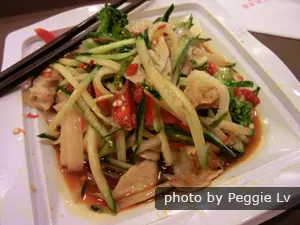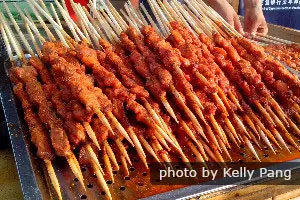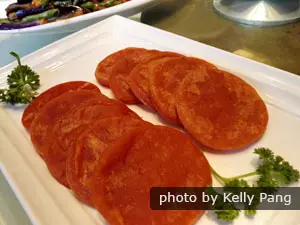
The
bustling city of Xi'an, situated between the Weihe River in the north and the
Qinling Mountains in the south, is one of Northwest China's chief textile
centers. It also possesses more items of archaeological interest than perhaps
any other city of its size in China. The most important and best known of these
tourist attractions is the world-famous Terracotta Army, which can be enjoyed
with a tour to the impressive Emperor Qinshihuang's Mausoleum Site Museum.
Xi'an's
history stretches back some 6,000 years, and by the 3rd century BC it boasted
one of the highest urban populations in the country. The remains of the Han
imperial residence can still be seen, along with fortifications and other
evidence of the city's importance as the starting point of the famous Silk
Road. From here, this fabled route wound its way through Central Asia and
the Middle East as far as the Mediterranean, linking Xi'an with such far away
cities as Istanbul and even Venice.
Among
Xi'an's other important historic sites are the 64-meter-tall Pagoda of the
Great Wild Goose, a survivor of the Tang Dynasty from AD 618 to 907, and
the 43-meter-high Pagoda of the Small Wild Goose, built in AD 684 in
honor of the Tang Emperor Gaozong. Another must-see is the Historical Museum
of Shaanxi Province, China's most important archaeological museum,
illustrating the origins and achievements of Chinese culture from prehistory to
the Qing period of 1368 to 1911.
Other
points of interest include the Town Walls, completed in 1398 with four
gates and numerous watchtowers, and the city's 15th-century mosque. This
impressive structure features five courtyards and traditional Chinese buildings
decorated with Islamic patterns.
Food in Historic Xi'An
1. Cold Noodle
Called liangpi in Chinese, it is a Chinese noodle dish originating from Shaanxi Province. It is now mainly popular northern China. For flavors, you can choose spicy or sweet and sour. Commonly used ingredients are flour (wheat flour or rice flour), salt, gourmet powder (MSG), sugar, pepper, vinegar, soy sauce, garlic, cucumber, and bean sprouts. Eating cold noodles in hot weather can help reduce fatigue and it is a good dish to relieve summer heat.
2. Xi’an Kabobs (烤串儿)
Xi’an kabobs are much like Western kabobs. Various kinds of meat are skewered and cooked over a charcoal fire, and spices and sauce are added. They often come with the familiar vegetables like bell pepper placed in between.
3. Persimmon Cakes (柿子饼)
These are cakes that are made from persimmons. Persimmons are a common and very tasty fruit that is eaten in China. If you haven’t had a persimmon, the fruit itself might be a new favorite snack for you. Shizibing (‘persimmon cakes’) are dried persimmons stuffed with fillings such as bean paste or sesame paste and then fried. They are sticky and sweet. In the Muslim Quarter, each one costs about 1 RMB.



No comments:
Post a Comment